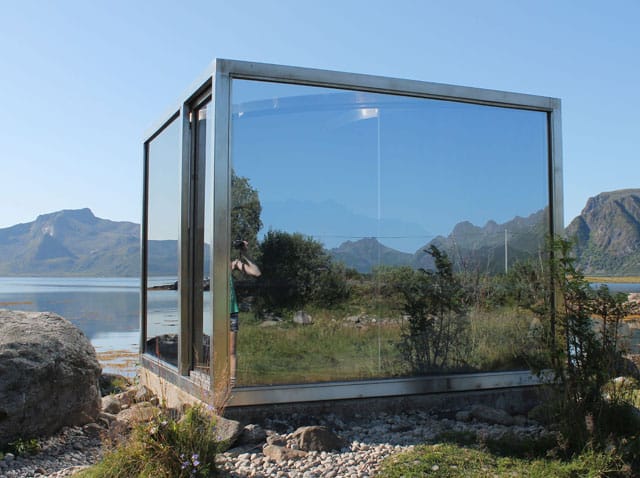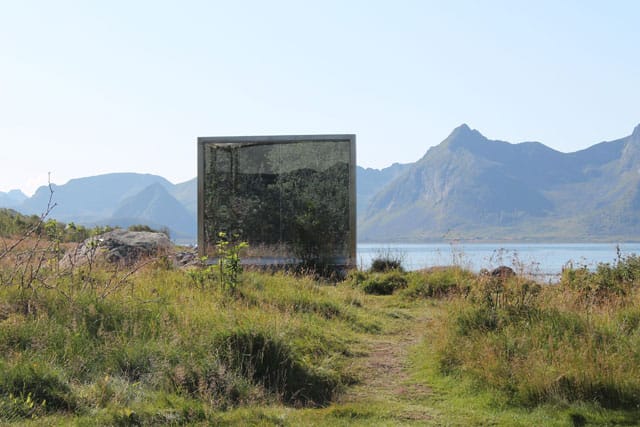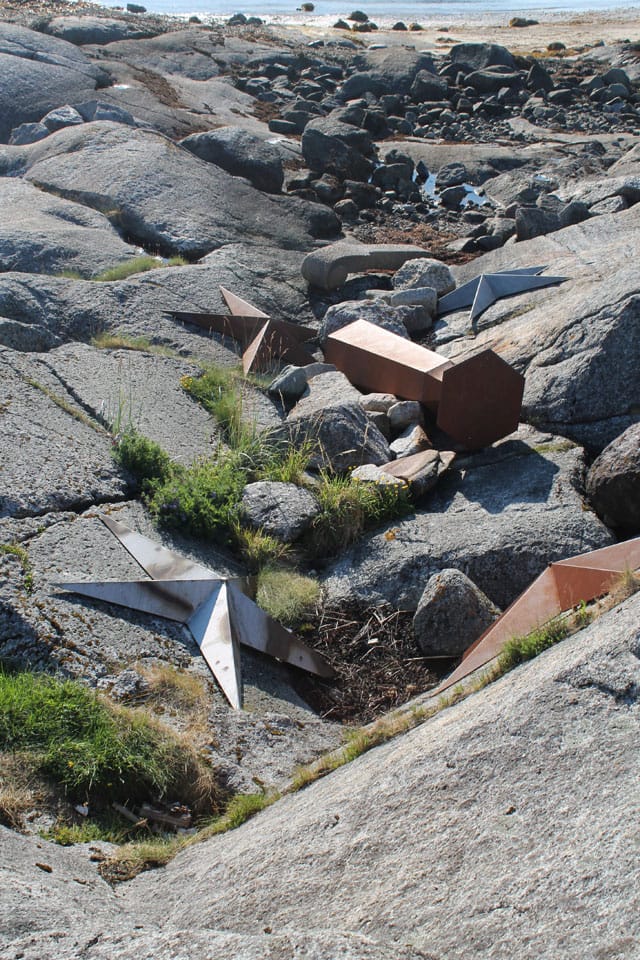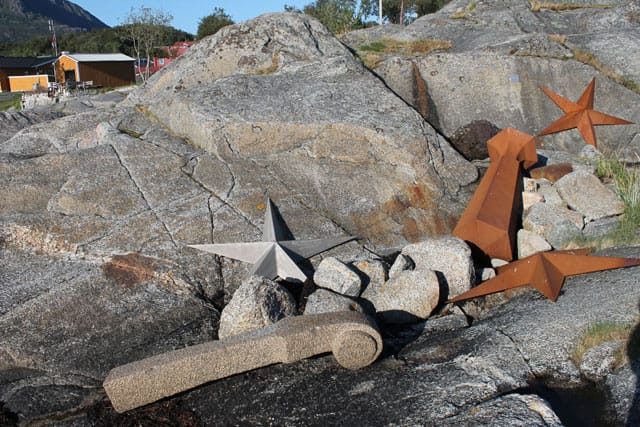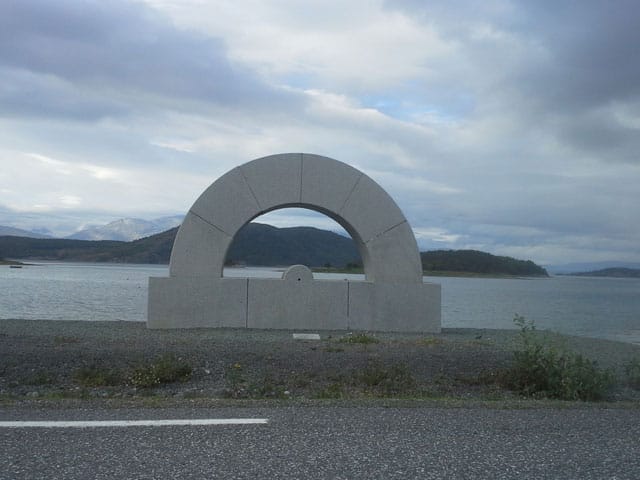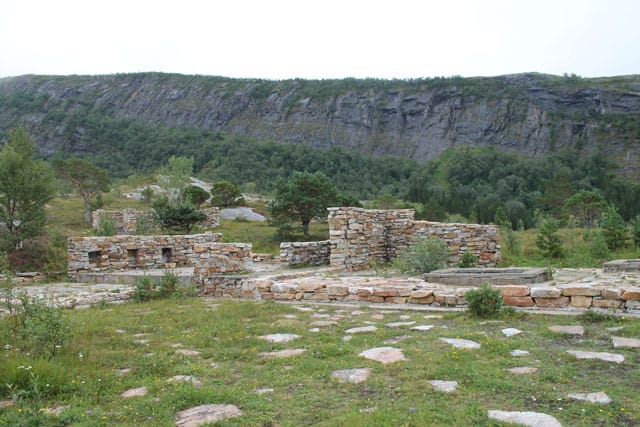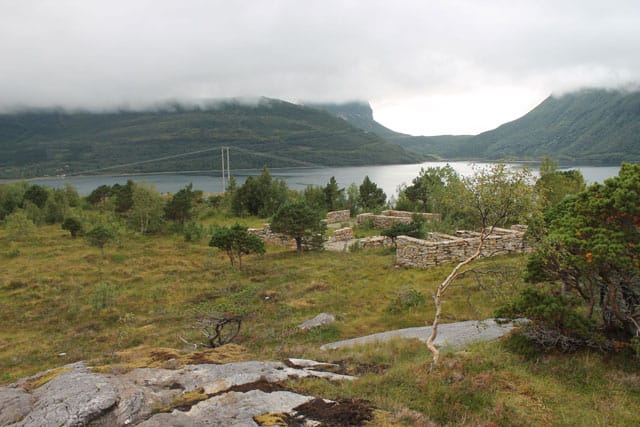Sculpting a Nordic Landscape
BODØ, Norway — Artscape Nordland (Skulpturlandskap Nordland), an opus of site-specific sculpture in northern Norway, includes 35 works scattered throughout Nordland county (and one in Troms), made by international artists hailing from 18 countries.

BODØ, Norway — Artscape Nordland (Skulpturlandskap Nordland), an opus of site-specific sculpture in northern Norway, includes 35 works scattered throughout Nordland county (and one in Troms), made by international artists hailing from 18 countries. The resilient sculptures in Nordland are located in municipalities both above and below the dividing line of the Arctic Circle. Most of them exist by bodies of water, where the dramatic dance of light changes constantly, altering the mood and appearance of the reflective fjords, lakes, and ocean.

While I was on a residency at AiR Nordland, hosted by Kristoffer Dolmen of the Nordland County Council of Culture and Environment, daily road trips included stops at many of the enthralling sites, but we hardly made a dent in the list due to destination distances. Highlights included walking among the ruins of Swedish artist Jan Håfström’s work “The Forgotten Town” (1996). The sculpture is set amid mountain wildflowers and moist moss in the Gildeskål municipality. Hiking to the sculpture offers the experience of traversing a mountain wetland of Nordland: you have find natural stones embedded in the earth to step on, to avoid sinking ankle-deep into patches of water-saturated moss. Håfström’s sculpture, created with quartzite and limestone, appears as a ruin, perhaps of an unnamed, nonexistent temple or a gestural memory of a whole town, with labyrinthine walls, traces of a staircase, and stone foundations that gently interject in the mountain views. The sculpture works well as an illusion of place and a false reckoning with past lives and existences. The rock formations are meant to erode and change with the unfolding seasons, eventually melding into the earth altogether; time will tell when the piece will become a collapsed ruin of a ruin. A few rectangular, tomb-like pools hold still water, which reflects the stones and sky. Mirror-like, the pools allow for a moment of calm.
Further north, situated upon the natural foundation of the angled seaside rocks of Skutvik, Hamarøy, rests Steinar Christensen’s cosmic and classical “Stella Maris” (1994) with a toppled still-life cluster of three massive five-pointed stars, a severed violin stem, and a goblet. The piece is named after an ocean star and composed of marble, steel, aluminum, and granite. The sculpture sits close enough to the water to be affected by the tides — a site selected by Christensen himself, a native of Norway who spent six years of his childhood in Hamarøy. We also stopped by the Icleandic artist Kristján Gudmundsson’s work “Protactus” (1993) at Skjerstad, in Bodø. The towering granite protractor brings to mind measurement, precision, and the limits of our control of perception. Bright yellow lichen was beginning to collect along the arc stone formation.
Even further north, within the Arctic Circle on the Lofoten Islands, Dan Graham’s “Untitled” (1994) is comprised of a two-way mirror construction and stainless steel. The slow curve of glass is at once transparent and reflective, leading to a dizzying yet magnified encounter with the Lofoten mountain crags, seaweed, and water’s surface. Driving on Lofoten, we passed by Toshikatsu Endo’s large circular stone sculpture “Epitaph.” A handful of sheep had taken refuge alongside it, shielded from the wind and slumbering.
